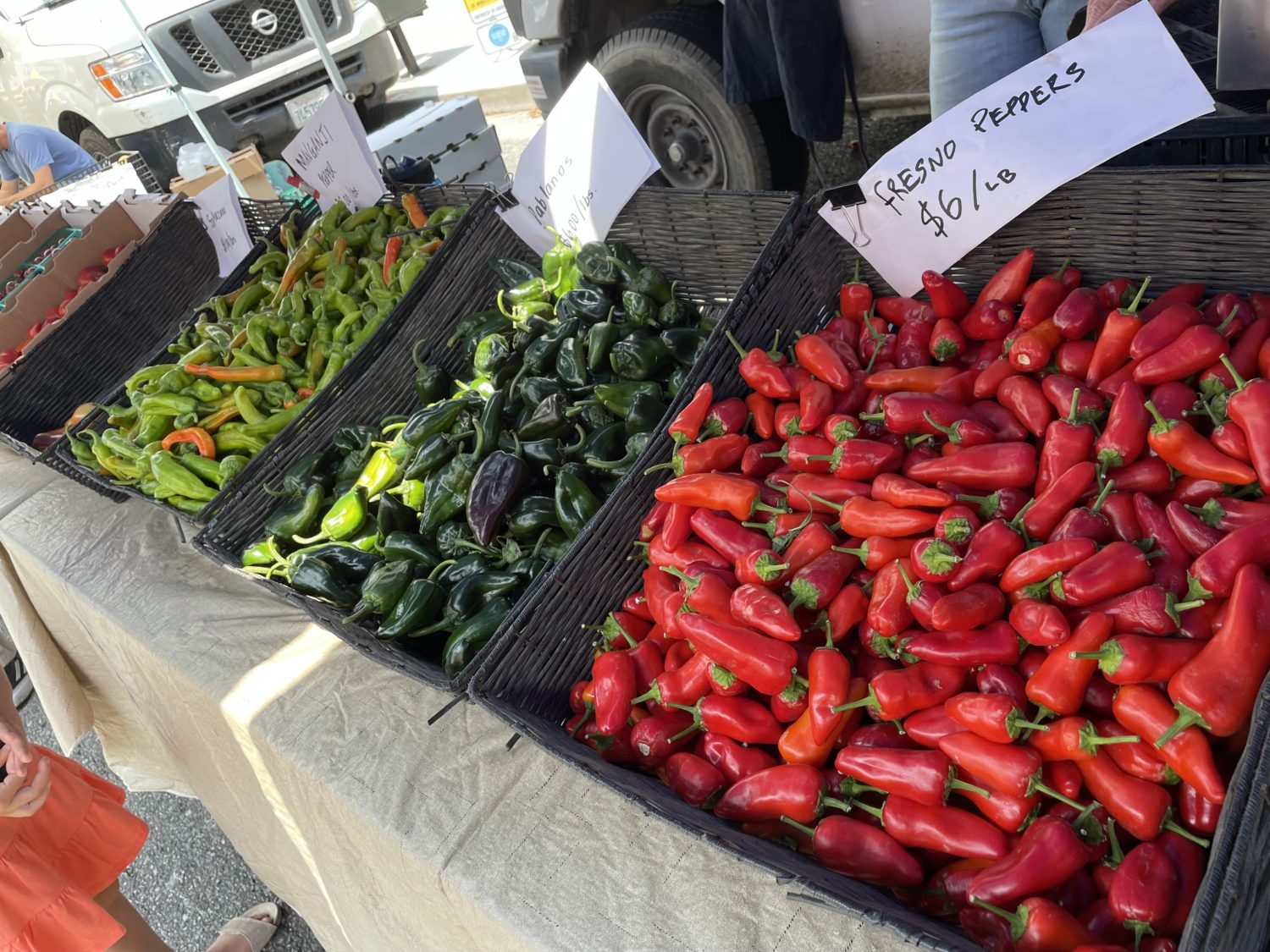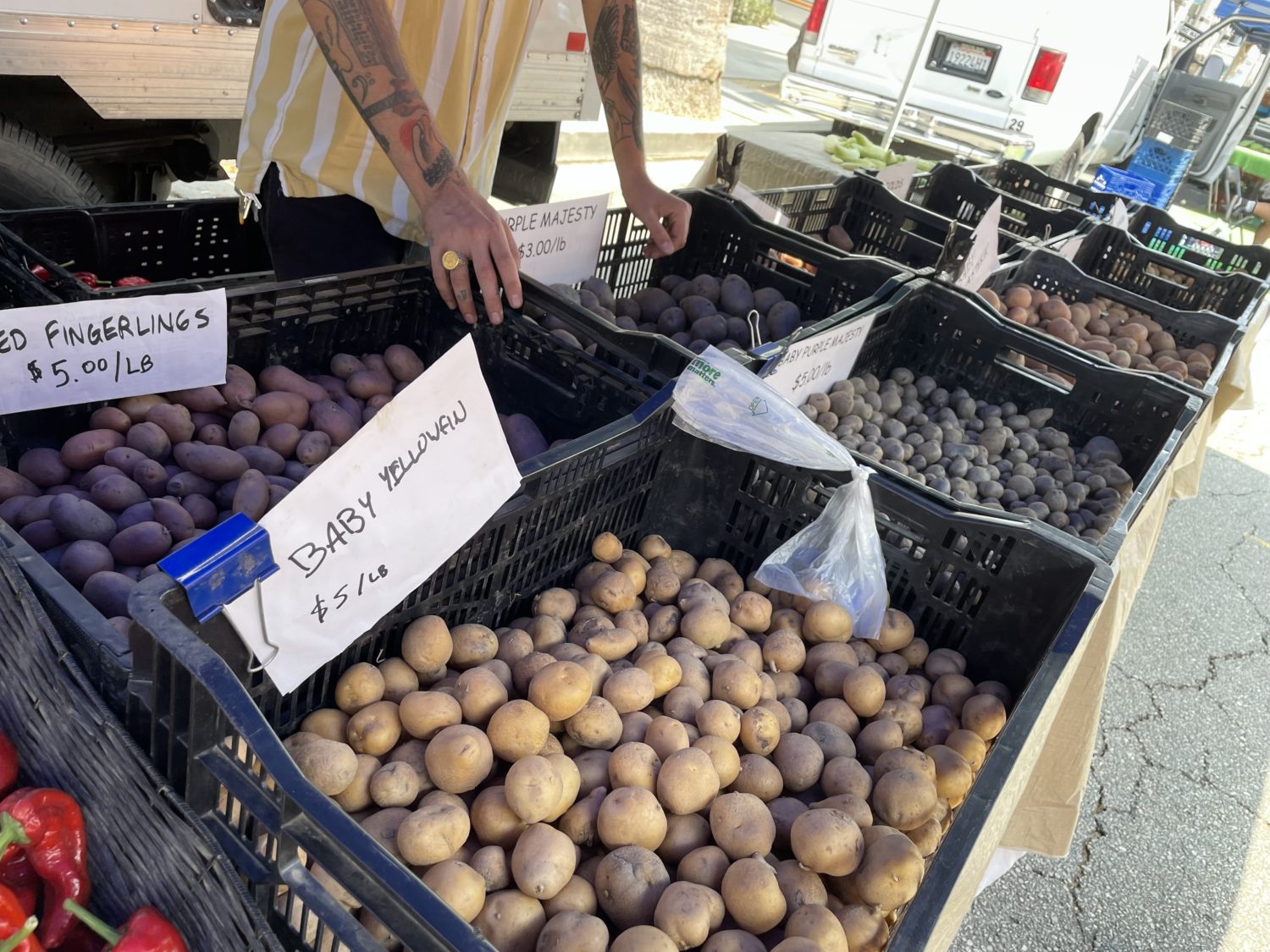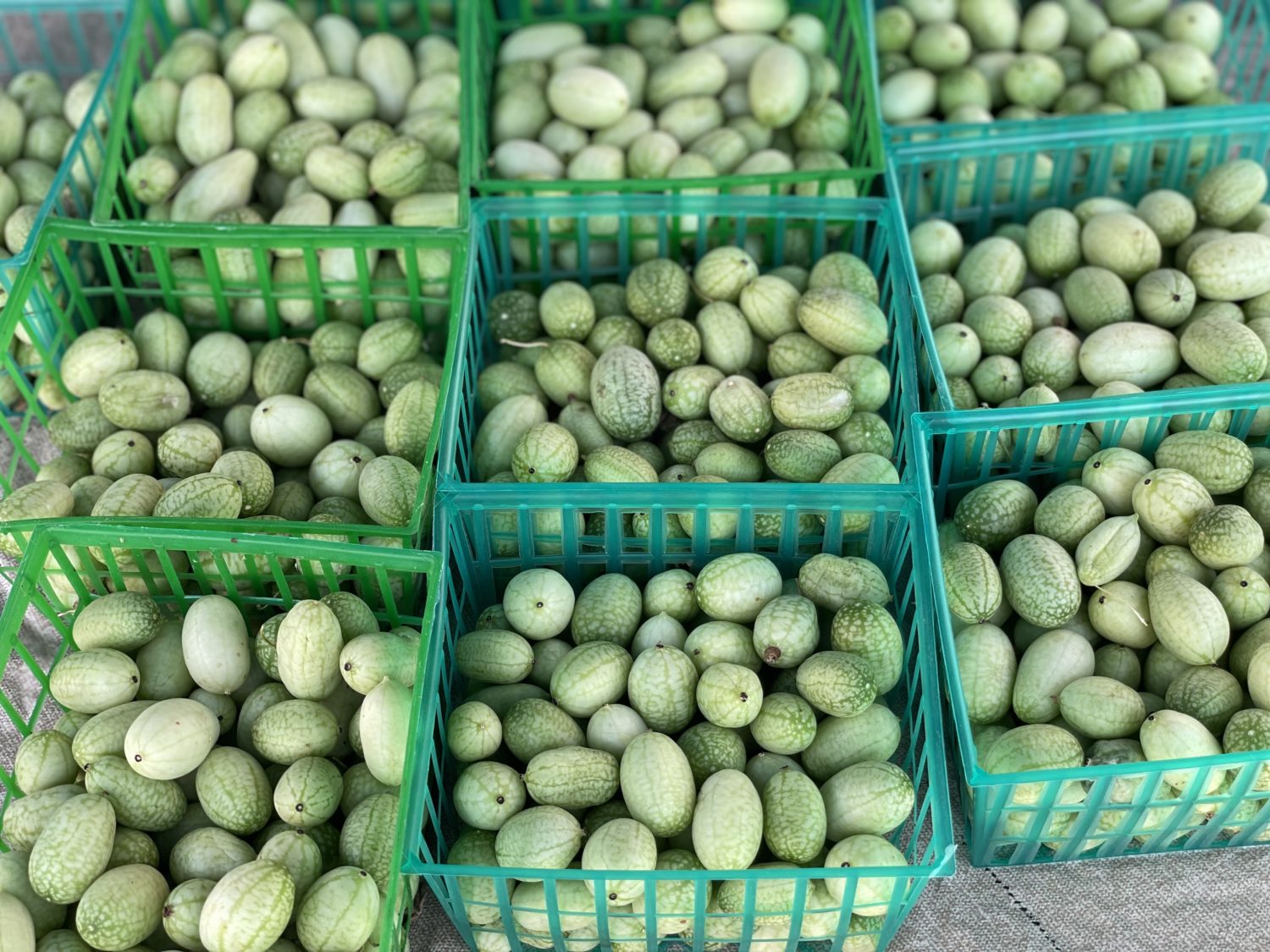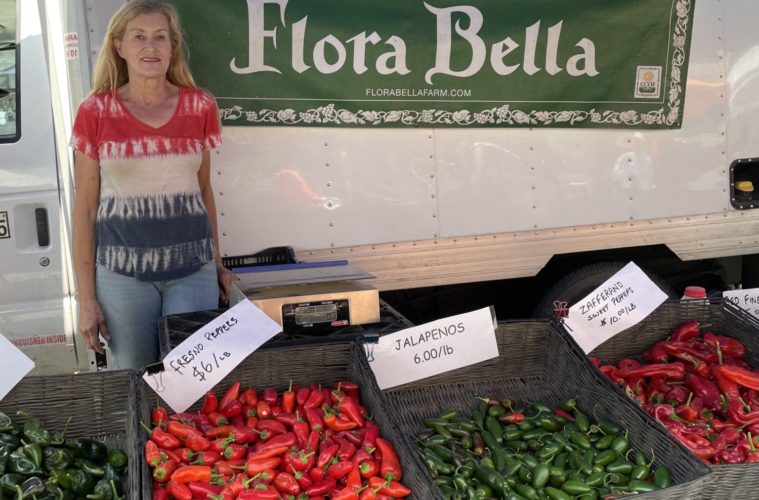Flora Bella Farms has been a fixture at the Santa Monica Farmers market since it opened in 1991. James and Dawn Birch have been a favorite stop for local chefs ever since they made their first sale to Nancy Silverton. Because of the lack of water in this year’s drought and the loss of most of their crops, next Wednesday, July 21 will be their last day at the market with no return day in sight.
We talked to Dawn at the market Wednesday, who told us that this is just the tip of the iceberg. The drought will affect more and more market vendors which will translate to our own plates and those of our favorite restaurants:
Our water source is snowmelt off the Sierra Nevada mountains and this year is the lowest snowpack since they’ve been keeping records. And with this unrelenting heat, it’s all melted. We’re in Three Rivers, California right outside the entrance to Sequoia National Park. The mountain goes up about 7,000 to 8,000 feet and we count on that water coming all the way down and we pull it out of the Kaweah River via our 150-year water rights. The river is now dry. Three Rivers has a north fork, a south fork and the main fork and we pull out of the north fork.
With everything so hot, even up at elevation, it’s 90 degrees at 7,000 feet. The foliage and the soil only have 30 percent humidity. The trees are taking the water out of the springs so the river is virtually dried up. We have to leave what there is left so that the fish can survive. We pull the water and put it into holding ponds and we water our farm out of that. The river is dry, our holding ponds are almost empty.

Flora Bella carries some of the most unique and sought after pepper varieties (Michele Stueven)
We knew this was coming for six or seven months and made the decision not to pull so much water out that the fish in our holding ponds would die. We noticed the other day that the fish were not doing well and stuck a hose in there to aerate the water. The water is just getting too hot for them to survive. There’s no depth they can go to in order to cool down.
At this point, we’ve accepted the reality of what’s happening and realize we can’t fight it. There’s no place to get water. So, we’ve opened up our gates and the animals can come in and eat what’s left of the farm – the deer, the racoons, the bears, the skunks and the wild turkeys. There’s nothing left for them up in the hills.
We made an appointment to get a well built. We have one on our farm, but that’s for our house. It gives us six gallons an hour. We’ve got the well diggers coming – like everyone else – and we’re in our place on the calendar in the last week of July. So everything will just die.
Next Wednesday will be our last day until probably October, once it cools down and springs start running again and everything won’t be sucked out at the higher elevation and hopefully the river will flow again and we’ll get help from the well. But you never know. We’ve had fire season in October. Since we’re 1,000 feet up in the hills, we don’t drill looking for underground water, we drill looking for a place where the granite rocks have enough cracks. We’re hoping for relief from the spring water. We’ve got three possible locations and you pay per foot for digging that well whether there’s water there or not. It costs about $10,000 just to get on their calendar.

Potatoes are some of the few surviving crops at Flora Bella Farm (Michele Stueven)
Are you getting any government help?
There is no government help for us. We don’t pull our water from the state delta allotments. We have our own water rights for our own property. There’s no way for the government to get water to us. Even if I was in the Central Valley on the flatland waiting for my allotment of water from the government that never came, what am I going to say? Give it to me when I know my hundreds of neighbors are getting it either? Nobody’s getting water. Levels are down at Lake Cachuma and Casitas Reservoirs and it’s going to affect more farmers market vendors as the summer goes on.
So what is the solution to this crisis? What can California do?
Well, in this past drought we’ve cut our water usage to 50 percent. We don’t have stone fruit trees anymore. The crops we grow are grown under plastic with drip irrigation so there’s no evaporation. I think we have to be very good stewards of the land. Arugula is our thirstiest crop. It was the first thing we had to let go and maybe we just can’t grow that anymore. Same with the basil. We let the cucumbers go, the eggplant, we let 6,000 square feet of cherry tomatoes die. We’ve just been letting this field die and that field die. We can’t even keep the produce stand on our farm open.
What we need is a water pipeline to relieve the floods in the rest of the country. Texas can’t grow crops because of too much water and we can’t grow because of lack of it.
The Central Valley of California is a desert that we’ve been farming for 150 years. And maybe that’s just how long you can farm a desert. With the global changes in temperature, our growing areas will just have to move to other locations where we never thought of growing things and become the new breadbasket, the title that the Central Valley has held for 150 years. We’ll just have to acclimate and figure a way through this and everybody has to do their share.

Flora Bella Farms cucamelons (Michele Stueven)
Advertising disclosure: We may receive compensation for some of the links in our stories. Thank you for supporting LA Weekly and our advertisers.

